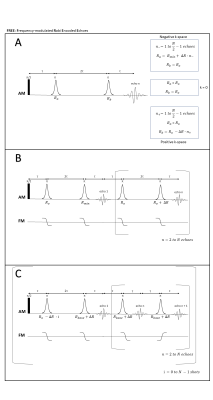Efraín Torres1,2, Taylor Froelich2, Lance DeLaBarre2, Michael Mullen2, Gregory Adriany2, Alberto Tannús3, Daniel Cosmo Pizetta3, Mateus Jose Martins3, and Michael Garwood2
1Biomedical Engineering, University of Minnesota, Minneapolis, MN, United States, 2Center for Magnetic Resonance Research, University of Minnesota, Minneapolis, MN, United States, 3Centro de Imagens e Espectroscopia por Ressonância Magnética - CIERMag - Sao Carlos Physics, São Carlos, Brazil
1Biomedical Engineering, University of Minnesota, Minneapolis, MN, United States, 2Center for Magnetic Resonance Research, University of Minnesota, Minneapolis, MN, United States, 3Centro de Imagens e Espectroscopia por Ressonância Magnética - CIERMag - Sao Carlos Physics, São Carlos, Brazil
Here, a B1-encoding approach is presented that allows for phase-encoding without the use of B0 gradient coils. This presents the possibility of designing systems without B0 gradient coils, greatly reducing cost and increasing portability.

Fig. 1a) Multi-shot approach of FREE 1b) is a
single-shot approach. First double spin-echo pair has the greatest R-difference.
Subsequent π pulse pairs have a
difference of exactly ∆R incrementally
adding phase at each echo acquired. 1c) Multi-shot version of FREE, in
which all (odd and even) echoes are acquired. All pulses, except for the first, have Rbase +
∆R, where Rbase is any adiabatic R value. Further shots reduce the R value of the first pulse (Ro) by integer values of ∆R. The k-space
matrix is created by concatenating the data columns (shot number) with rows as
echo number.

Phantom is a NMR tube with ~15 cm water doped with copper sulfate. Structure
was created in the phantom by purposefully creating a flip angle range. Comparison
of the GRE projection and FREE reconstruction. The x-axis represents nutation
frequency which has positional dependence due to the surface coil’s B1
gradient. The plane of surface coil is located on the right where
is the largest. Linearity of the B1
gradient decreases with distance from the coil. Good agreement between GRE and
FREE reconstructions is achieved except at the deeper location.